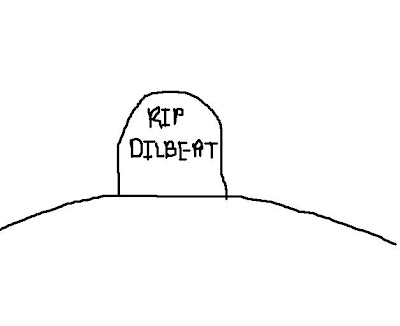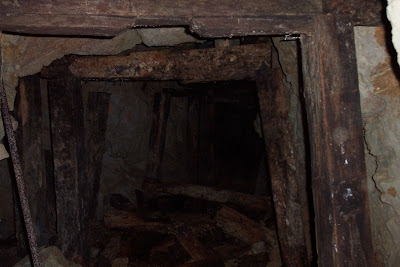
Wax is nothing new. We all have seen candles in action at Halloween or at low-quality restaurants that put candles on the table to try to spruce the place up. Some of us find significant deposits growing from various nooks and crannies of our bodies. Wax is one of those things that I’m glad to have around, but I have never really thought about where it comes from. Bees make wax I think. Also honey. But they also sting you if you throw rocks at them. Bees are a bit of a conundrum.
So there we are. Living in a waxy world but never knowing from where this miracle material comes from! I suspect that most people go to their graves never having the question of where wax comes from answered to any level of satisfaction. These people then go on to become crotchety old ghosts, unable to rest as long as the mystery of wax eludes them. Well, there will be no such fate for us!
Now, before I get your hopes up, I have to tell you that I have no idea where the majority of wax comes from. Perhaps an enlightened reader can fill us in so we don’t become crotchety ghosts. But I do know where a very small portion of wax comes from. What if I were to tell you that some wax comes from the earth? I’m not talking about bees that have chosen to live underground. I’m talking about wax that comes straight out of geology’s kitchen. What’s more, what if I told you that there is only one place in the U.S. where commercially useful amounts of this waxy wonder comes from? Have I blown your minds? Well, that’s just the beginning. Strap yourselves in, because the tale of Ozokerite is a bumpy ride.
Our story actually begins with the little town of Colton, Utah. Not much to look at nowadays, Colton was once a pretty important place. Well, not really. I’m just saying that to pander to the powerful Colton lobby. Colton was a dump then and it is a dump now. Actually it isn’t much of anything now, but none of this is important. In 1883, a little outfit named the Rio Grande Railroad Company was building a railroad from the top of Spanish Fork Canyon to Price, Utah. For those of you who aren’t from around Utah, this is what we are looking at.

I can't read that map either. Ah well. Price is a land rich with coal, (among other, less pleasant things), and this railroad was built in order to haul the good stuff up out of Price and over to Provo where those jerks could use it for whatever they wanted. As an interesting note, Provo would later produce several girls who wouldn’t date me.
Anyway, railroads, like children, are noisy, frustrating, steam-powered creatures that require constant help and often smell bad. In order to get the trains up the canyon, several stopping points were needed to re-streamify the engines as well as to perform various other railroad-related things. I imagine that prostitutes were somehow worked into the equation. One of these stopping points ended up being the town of Colton. Originally named Pleasant Valley Junction (which is a far better name for a town than other names we have seen. Eat it Sulferdale), Colton served as an important stop for the trains. I imagine that the scene looked something like this….

In 1897 the town’s name was changed to Colton after Willaim F. Colton, a railroad dude who helped develop the place. With all that great, steamy action taking place the town soon blew up. A school, a couple of large hotels, a full-fledged business district and all the other wonders that the late 1800’s had to offer showed up. Even Batman got in on the action! Look! I have managed to acquire a rare photograph of him fighting some sort of turn of the century villain (The Coal-Miser, The Immigrant, Lord Consumption, President Garfield, etc. )

Nah, that’s a picture I got at Comic Con last year. Heehee! Look! Batman’s cape is stuck on a fence! Man I love Comic Con. But all this prosperity was a pathetic, puke-worthy display compared to the glory the town was soon to enjoy.
To quote Wikipedia, Ozokerite is a naturally-occurring odoriferous mineral wax or paraffin. While that may be an apt description, I find that it lacks the passion that is owed to such an unusual material. I prefer my own description of Ozokerite is a naturally-occurring odoriferous mineral wax of paraffin that is totally tits. So, what does this magical substance look like? Take a deep breath, because the answer may blow your mind….


It’s a black rock-looking thing! Geology loves to make things look like other things. But it certainly feels different than most other rocks. For one thing it is way waxier than most rocks. Like WAY more waxier. This can be attributed to Ozokerite being made of wax. Plus, as Wikipedia told us in its rather uneventful summation of the stuff, it smells bad. Well, not bad. Just really waxy. It smells like if Silly Putty and a really old person had a baby. Look, here’s a piece of Ozokerite in a fancy suit!

And here’s a piece that's down on his luck.

Anyway, if you are any sort of internet geologist, you have to be curious as to how the term Ozokerite came to be. Well, that’s a good question. One that can easily be answered right now. By me. Ozokerite means “Stench wax” in greekish. This is an unfortunate name, but it’s about the best you can hope for when you are a chunk of stenchy-wax. or Courtney Love. Just to break up the text, I'm going to post a picture of another sketch I got at Comic Con

That picture works as a great transition, as Ozokerite's origins are as magical as that of any superhero. First, a large reservoir of oil forms underground as dinosaurs and trees and stuff all return to nature in the beautiful dance of life. Then the oil escapes from its earthy prison through various little cracks and crannies in the rock until it either reaches the surface or just sorta evaporates where it is. If the oil fails to reach the surface and just sits there in the crack, then it will eventually turn into something else. What it turns into isn’t any of our concern, what does matter to us is that as the oil dissolves, it leaves behind wax. Stench wax, to be exact. This exciting and arousing journey has happened in very few places in the world, and only in one place in the U.S. Right next to a little town named Colton, Utah. Eh? Eh? Why, that’s the same town we were talking about above!
In 1904, an outlaw named C.L. “Gunplay” Maxwell decided to stop murdering people and stealing things to look for some honest work. He came to Colton with the intent of being a mine guard for one of the nearby coal mines (and probably to do a little murdering and stealing), but ended up finding something unusual in the hills above town. It was some sort of stench wax! Soon Ol’ Gunplay and his lawyer set up the Utah Ozokerite Company and went to town on the stuff. Within a few months, they had advanced their mine 70 feet. This mine, in fact…


In March of 1905, a mill was built, and hoist and pumps were put in to lift folks out of the stench wax hole. This mill, in fact…



Yes, it was a good time to be in the stench wax business. Interestingly enough, the one guy who didn’t agree with this statement was Gunplay. He just couldn’t shake the murdering bug, and in 1909 he had a rather clichéd pistol duel with the sheriff of Price. Turns out the sheriff was faster.

But Colton was loving the Ozokerite boom, even if Mr. Gunplay was pushing up daisies in the arguably one of the uglier cities in Utah. Turns out you can use the stuff for all sorts of neat old-fashioned things! You need a new phonograph record? You need some Ozokerite. Need waterproof matches, wax paper, boot polish, wedding cake figurines, varnish or fireproofing for your life preservers? You need some sweet, sweet Ozokerite. Say you are the operator of an organized religion, and you are tired of being surrounded by droopy candles. You know that the Lord can’t be pleased with your lack of proper, upright candles. So you buy some Colton-brand Ozokerite candles, which due to their slightly higher hydrogen content won’t droop under day to day use! Now just to sit back and watch the converts roll in!
And so things went. Then in 1940 diesel trains made the town of Colton obsolete, as the railroads no longer needed to be constantly fixing their engines. At least they still had that Ozokerite industry, right? Well, geology is a funny thing. Actually it’s not. It’s about as far from funny as you can get. But it is a fickle thing. Just as the community had to rely on Ozokerite for life, someone else went and ruined everything by inventing plastic. Long story short, by 1950 the town was gone. Now it just sorta looks like this.

It’s out there somewhere. I couldn’t find anything remaining from it. Well, except for this thing.

That is up there still. They moved it from the townsite to next to the freeway when the town died. Now it sits there waiting for whatever it is that gas stations wait for.
That’s a disappointing way to end a post though. Here’s another sketch from Comic Con. Neat!




























































